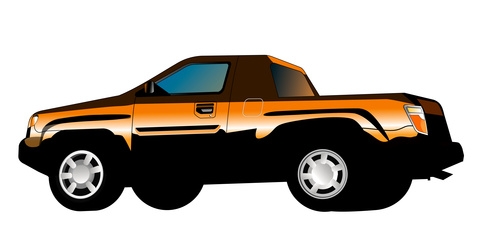
Early automobiles utilized mechanical clutch systems with multiple cable and linkage connections. These mechanical clutch systems had many problems, requiring frequent adjusting of the clutch assembly. It was also more difficult for the vehicle operator to engage and disengage the clutch during vehicle operation. The subsequent hydraulic clutch systems offered more reliability and ease of use, and required less maintenance to keep the vehicle operational. The hydraulic clutch system operates similar to the hydraulic brake system; however, there are still mechanical components used on the transmission side of the hydraulic clutch system. Replacing the clutch master cylinder requires common tools and basic automotive repair knowledge.
Disconnect the negative battery cable from the vehicle battery.
Pry off the clutch pedal push rod, retaining pin and bushing, using a flat-head screwdriver. The clutch pedal push rod, retaining pin and bushing are located inside the vehicle, at the top of the clutch pedal.
Locate the interlock switch connector inside the vehicle, at the top of the clutch pedal. Press in the two tabs on the side of the connector. Pull the connector apart.
Remove the two master cylinder bracket retaining nuts, using a socket wrench and socket. Remove the bracket. The retaining nuts and bracket are located at the top of the clutch pedal, inside the vehicle.
Locate the clutch master cylinder on the right side of the engine compartment, against the firewall.
Locate the clutch tube that runs from the master cylinder to the slave cylinder on the transmission. Remove the two retaining clips that secure the clutch tube to the master cylinder, using needle nose pliers. Pull the clutch tube off the master cylinder.
Pull the clutch master cylinder away from the engine compartment firewall until the mounting studs clear the firewall. Rotate the clutch master cylinder ¼ of a turn counter-clockwise to clear the interlock switch and pull the assembly out of the engine compartment.
Insert the two retaining nut studs on the new clutch master cylinder through the firewall, in the engine compartment.
Place the master cylinder bracket onto the master cylinder studs inside the vehicle. Install the two retaining nuts onto the master cylinder studs. Tighten the nuts, using a socket wrench and socket.
Push the clutch tube onto the clutch master cylinder and install the two retaining clips, using needle-nose pliers.
Push the interlock switch into the connector at the top of the clutch pedal inside the vehicle.
Install the bushing into the clutch pedal push rod and secure the clutch pedal to the push rod with the retaining pin, using needle-nose pliers.